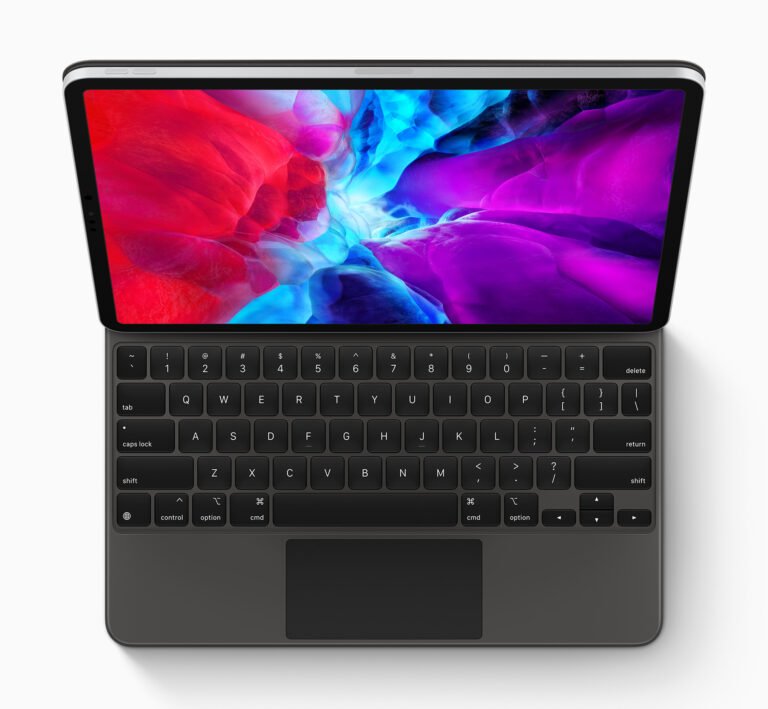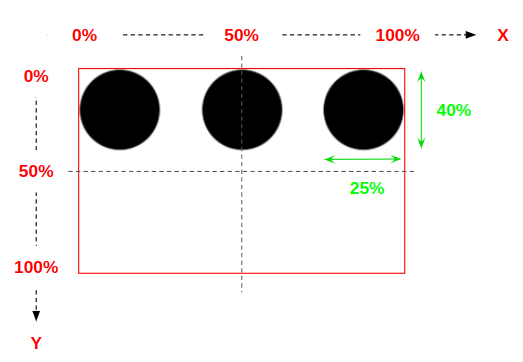
In this article, we suggest 10 simple and different elements that you should incorporate into your website. Each of these elements has been proven to be user magnets, with enough engagement power to convert first-time visitors to lifetime users—or the next best thing.
Detailed Contact Information
Table of Contents
In a time when virtual structures are crashing up and down, trust is a coin that the average internet user is unwilling to use. Therefore, if you can get first-time users to trust that you are who you claim you are, you would have increased the odds of converting them by a large margin.
One of the easiest ways to achieve this user trust is to include detailed contact information on your website. This is not the ‘90s, so very few web users are interested in going down the rabbit hole in search of ordinary contact information. So, don’t go using rainbow colors on your website to cover the fact that you did not include a simple address or phone number that users can reach you with.
You have multiple contact information options to choose from. These include your email address, phone number, fax, links to your social media account or channel, business location, or even an interactive map. The more of these contact information options that you include on your website, the more legit your website appears to users.
So, place this information on a different page that users can access via your website’s navigation menu. If this is inconvenient, place your contact information at the bottom of the home (welcome) page.
Detailed Information on Your Merchandise
Your core products and/or services is another area that users want to have detailed information on. Many website owners go through a lot of stress including interactive elements but fail to list what they are selling. This is one of the biggest turnoffs for the kind of users that will commit to products and services for a long time.
This is the deal with providing detailed information on your core products and/or services: the internet is a multiverse with copies of everything everywhere. Therefore, web users looking to find anything want it to be specified without their having to ask a thousand questions or scroll through images of smiling people that don’t really say anything.
So, if you are looking to engage first-time visitors to your website and convert them to long-time users, show them what you are offering. Put up a virtual glass case on your Home page that effectively says, “Welcome. We are so-and-so. We sell such-and-such.”
The most popular way to include information on core products and services is to have a Products/Services page. This way, users can easily find your products and services and ask you for clarification or just straight up click the Buy Now option.
Bonus point: Although you can include information on your core products and services on your About Us page, you should not. Users know that such pages are stuffed with exaggerations, so you risk them polishing genuine information about your products and services.
Pricing Page
Specific information on pricing is another area that many website owners have a hard time including on their websites. As a result, first-time users quickly lose interest after reading that products and services are ‘cheap,’ ‘affordable,’ and other vague terms you here dishonest sales people use all the time.
If you want to quickly engage a first-time user, you have to give them as much detailed information as you can without overwhelming them. This includes information about how you price your products and services.
Using terms like ‘cheap’ and ‘affordable’ to describe your products and services without including the real figures on your website is off-putting. Internet users cannot set websites on fire, or they would have done so for the thousands of websites that use this stupid trick in an attempt to get new users. But it rarely works, if at all.
So, to avoid coming off as a dishonest or stupid web owner, make sure to include your pricing plan on your website as clearly as possible. The best way you can include this inclusion for user convenience and satisfaction is to create a separate page for it. This way, the user only needs to scroll to the top of your Home page or click the Menu to get pointers to your pricing plan.
Customer Reviews and Testimonials
We noted earlier that user trust is a coin that you don’t find lying around. No, you earn it. The easiest and most convenient way to find out about the value of a product is to ask someone who has used it before. This is what customer reviews and client testimonials are for.
Imagine that your website offers a product that auto-detects and fixes SSL errors and similar browser issues. You are not likely to be the only person with this kind of information. So, what can make you stand out and get users to check out your website first before looking elsewhere? User comments. Customer reviews and testimonials work the same way.
Users tend to trust websites where they can read customer reviews about your products and services. This is another reason users prefer brand application stores (like Google Play and Apple Store) to third-party options, even if the latter is cheaper. To include customer reviews is to tell first-time visitors to your website that you are confident in what you are selling.
Of course, it is important that the majority of those reviews are positive and a few are negative. It is even more important that the negative reviews have been dealt with, such as a response from your support team that the noted problems have been fixed.
Testimonials on websites are efficient tools for converting users. A typical user scrolls down a Products/Services web page to find testimonials or, at least, customer reviews. So, make sure to ask for testimonials from your clients on how your products and services helped them and in what way exactly. Then you can include this information on a page of its own or in your Products/Services page.
FAQs Page
How many times have you had questions about something you saw on a website and were excited to find that there is a FAQs (Frequently Asked Questions) page and your question has been answered? This is the narrative all users share. That excitement is the kind that can trigger user conversion, so you need to make it happen with your website.
One understandable reason many web owners and managers don’t include a FAQs page on their website is that it requires a bit of work. First, you might need to use advanced tools to find out what questions users are asking about your products/services. Second, you would need to find a way to answer these questions directly and concisely.
However, spending time and money to build a useful FAQ page is worth it. Apart from using it to answer general user questions, it could also be indexed on search engines as the most suitable response to user inquiries.
So, including a FAQs page on your website is an all-around win situation for you. It can get more users to visit your website and visitors to trust you and consequently subscribe to your products/services.
Live Chats
Providing a virtual bridge for first-time visitors to your website to reach you is another reliable way through which you can engage and convert them. You may be able to nudge these users towards trusting you by including detailed contact information. However, you can significantly bump up your chances of converting them by including a Live Chat option.
The Live Chat is what it says it is: a method through which users can immediately contact and get responses from website support teams. When a user sees that you included this feature on your website, they grow confident in their decision to patronize you. This is because they know that they can easily reach you to lodge complaints if they need to.
Thus, including a Live Chat feature on your website is one of the best ways to make your website interactive, engaging, and likely to convert first-time visitors looking to get the products and services that you are offering.
Blog
Blogs are easily the most common web pages that internet users love to visit. This is because the typical blog is a hub of relevant information. Therefore, a user looking to hire a content manager (your area of expertise, for example), might want more assurance than customer reviews and client testimonials can offer. This is where adding an informative blog to your website saves the day.
A good blog is a reliable source of information for everything, especially stuff related to what you are offering online. First, it tells first-time visitors to your website that you are an expert in your industry. Second, it tells them that you care enough to provide such important information for free. And these reasons are enough to convert users.
Incorporating a blog into your website also helps you get ranked on search engines for targeted keywords. This makes it easier for you to attract traffic to your website, thereby lending you more authority in your industry. This authority is another selling point for converting users, and it can help you convert as many users that come looking to read something interesting on your blog as possible.
Navigation menus are as important on websites as they are everywhere else. They make it easier for web users to follow the content on your web pages without having to deal with a virtual labyrinth. And which web user is opposed to easing or convenience?
So, if you are committed to designing your website in a way that engages and converts users, you have to make it easy to navigate.
Rather than throw everything onto one page, create different pages: for information on products and services, pricing plans, customer reviews and testimonials, and more. And lock up all these pages under a Menu option. So, first-time visitors will very easily navigate your website and find more reasons to subscribe to your offerings.
Mobile-Friendly Formatting
Another important consideration you have to make on your website to engage and convert first-time visitors is text formatting. Smart users are put off by websites that feature scrawny-looking texts and copies with multiple fonts haphazardly strewn about. And smart users tend to commit to online products and services longer than others, so these are the users you should target.
Therefore, make sure to clean up your website and use uniform text formatting. It does not have to be flashy, only clean and regular enough that it makes it easy for users to follow the content. Also, the fewer font styles you use on your website, the better for your user conversion aspirations.
Website Conversion Funnel (CTA)
The point of suggesting these website elements is to have your website engage and convert users easily. But the effectiveness of including these elements in your website will drop critically if you don’t tell your users to ‘Click here for more information’ or ‘Subscribe for our newsletters’ or ‘Subscribe to this service by clicking here.’
This is the point of a conversion funnel or CTA (call to action). It shows your users what you need them to do and completes the conversion process. So, make allowances for this feature on your website to make it easier for users to do whatever it is you need them to.
Conclusion
Going through the effort of building a website to advertise to and interact with your target audience is only beneficial if you manage to engage and convert users that visit your website. There is no big secret to how to achieve this user engagement and conversion apart from the tips in this article about what elements to incorporate into your website.






